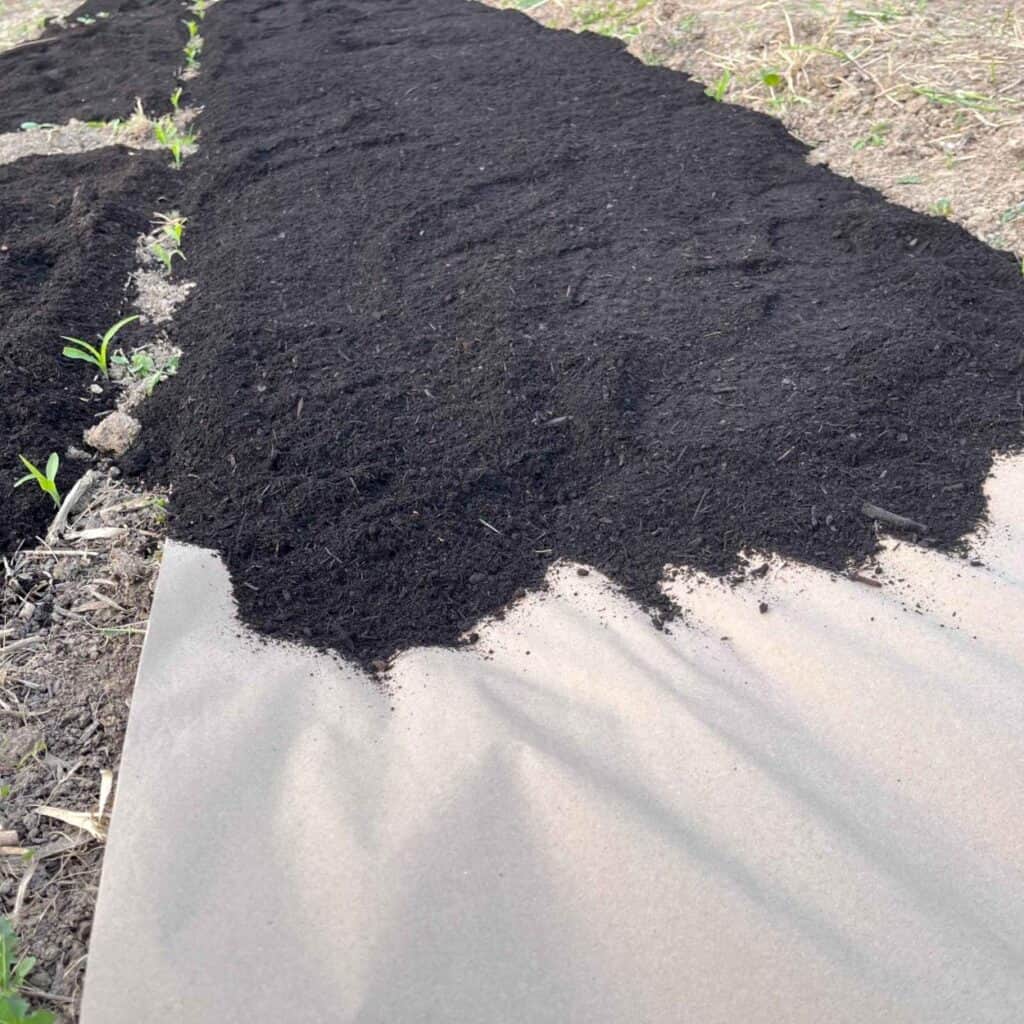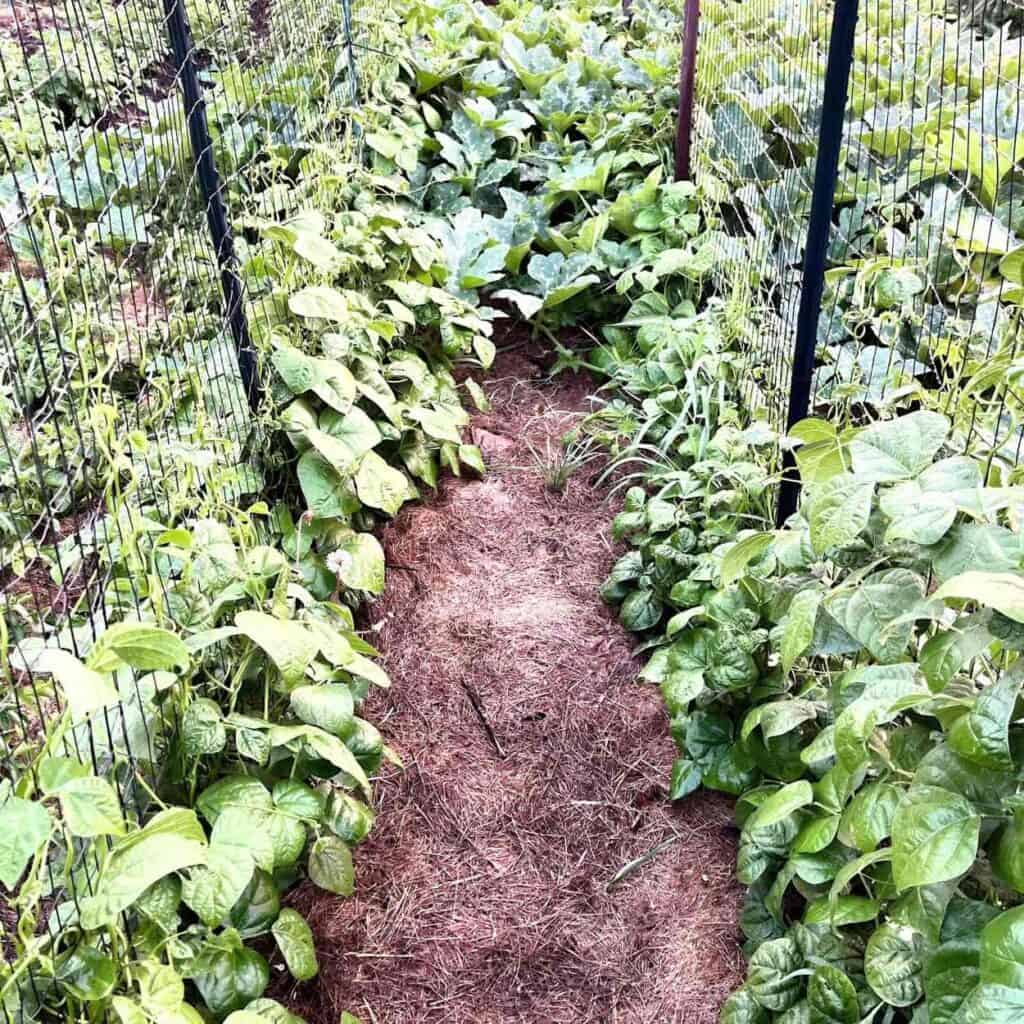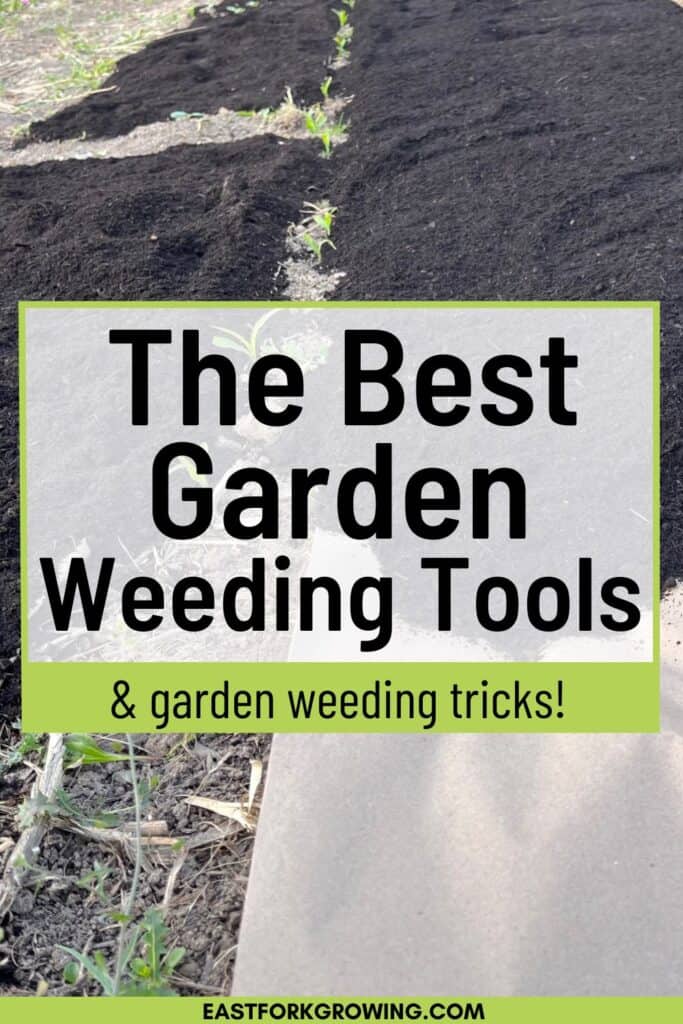Benefits of Weeding & The Best Garden Weeding Tools
Weeding is an essential part of maintaining a thriving garden, whether you’re tending to a vegetable garden, berry patch, or an orchard. There are many benefits of weeding that extend beyond aesthetics. Weeding your garden can significantly enhance the health of your garden plants, give you an opportunity to monitor your garden, and provide physical activity for you.

By removing undesirable plants, you ensure that your desirable plants have the necessary space, sunlight, water, and essential nutrients to thrive. In this post, we’ll explore the physical and mental benefits of weeding, discuss specific weeding techniques, and highlight some of the best garden weeding tools to help you tackle those pesky weeds in your garden.
Physical and Mental Benefits of Weeding
Regular garden weeding can be beneficial not only to your garden plants, but to you! Working in your garden offers numerous benefits for both body and mind. Weeding can give you a great workout! Weeding engages your muscles and improves flexibility as you bend, pull, and stretch to remove weeds.
Regular weeding can help you burn calories. Mentally, weeding serves as a form of mindfulness. Being in your garden allows you to connect with nature and enjoy the therapeutic effects of spending time outdoors.
Understanding Different Types of Weeds
To effectively manage weed growth, it’s essential to understand the types of weeds you’re dealing with. Annual weeds complete their life cycle in one season, while perennial weeds can return year after year if not controlled. Perennial weeds often have deep root systems that make removal more challenging.
Some weeds, like lamb’s quarter, can be beneficial and serve as food sources, while others, such as poison ivy, should be carefully avoided. Knowing how to identify specific weeds can inform your weed management strategy and help you protect your desirable plants.
Weeding Techniques for Success
Hand Pulling
One of the simplest weeding techniques is hand pulling, which involves manually removing weeds by grasping them close to the base and pulling them out, ensuring you remove the entire root. This method is especially effective for young, annual weeds that haven’t established deep roots.
To increase your efficiency, try to pull weeds in moist soil, as it makes removal easier and minimizes soil disturbance. Getting close and personal with the plants in your garden will also help you identify and pests or disease that need to be dealt with.
Hoeing
Using a hoe is a classic method for weed control in large areas. A hoe can quickly sever weeds just below the soil surface, effectively uprooting them and reducing their chance of re-establishing.
The push-pull hoe is particularly effective, allowing you to slice through weeds while aerating the soil. This tool is a must-have for maintaining healthy soil conditions and can make a positive impact on your crop yield.
Mulching
Mulching is a proactive approach to weed management that involves covering the soil with organic matter. Materials like straw, wood chips, or grass clippings block sunlight from reaching weed seeds, suppressing their growth and helping to retain moisture.
Applying a thick layer of mulch around your garden plants can also improve soil conditions as it breaks down, adding valuable nutrients and organic material. This not only helps in weed control but also increases productivity of desirable plants and attracts beneficial insects.
Flame Weeding
For those looking for a chemical-free solution to weed control, flame weeding is an innovative technique that uses a handheld propane torch to kill weeds. This method is most effective on young weeds and can quickly eradicate unwanted plants without harming nearby desirable plants.
It’s crucial to use this method with caution, especially in dry conditions, to avoid starting a fire. Flame weeders can be particularly useful for managing weeds in areas where other tools might be impractical, such as gravel paths.
Solarization
Solarization is a less conventional technique that uses the sun’s heat to kill weeds and their seeds. Covering the soil with clear plastic for several weeks during hot weather traps heat and creates a greenhouse effect, effectively killing many weed seeds.
This method is a good idea for preparing garden beds before planting. It can be especially useful in community gardens, where space is shared, and managing weed growth is essential.
Regular Monitoring
Consistent monitoring of your garden is crucial for catching weed problems early. Setting aside time each week to check for new weed growth can significantly reduce the overall time spent weeding.
Fewer weeds lead to healthier soil and better growing conditions for your crops. This proactive approach allows you to maintain the health of your garden and ensure that your desirable plants flourish.
If you don’t let the weeds get established, it will be much easier to maintain your garden. Weeding consistently each week is the key to not becoming overwhelmed by weeds.

The Best Garden Weeding Tools
Having the right tools makes all the difference in effective weed management. Here are some of the best garden weeding tools to keep your garden beds free of unwanted plants:
- Push-Pull Hoe: This is my favorite weeding tool for good reason. Its design allows you to easily slice through the roots of weeds just below the soil surface, making it efficient for large areas. It’s also easier on your back than a traditional hoe.
- Wheel Hoe: Ideal for larger vegetable gardens, the wheel hoe is great for cultivating soil and uprooting weeds without disturbing the surrounding plants too much. It can cover more ground quickly, making it a significant improvement to your weeding routine.
- Hand Tools: Small hand tools like trowels and weeding knives are perfect for precision work in tight spots, such as between your tomato plants or in flower beds. These tools allow you to target specific weeds without harming neighboring desirable plants.
- Flame Weeders: These can be effective for killing weeds without chemicals, making them an Eco-friendly option for garden maintenance. They’re particularly useful in gravel paths or around native plants that require extra care.
- Paper and Mulch: Paper and mulch acts as a weed suppressor. By covering your bare soil with unbleached paper and mulch, you can reduce the growth of weeds by blocking sunlight. This works great with grass clippings, compost, leaves, or straw! This is my number one method for reducing the weeds in my garden.

Weed Management Strategies
To keep your garden flourishing, consider integrating these garden weeding tricks into your routine. Proper planning and prevention strategies can significantly reduce the number of weeds in your garden and give you the low-maintenance garden you desire. One of the biggest benefits of weeding is reducing your overall garden workload.

Crop Rotation
Changing the type of crops grown in a particular area each season disrupts weed growth and helps prevent the establishment of deep root systems. This method also improves soil health by enhancing nutrient cycling.
Soil Health
Maintaining healthy soil conditions is key to minimizing weed growth. Adding organic matter, such as compost from your compost pile, can improve soil structure and nutrient availability. Learn more about improving your garden soil here.
Plant Density and Companion Planting
Planting your garden plants closer together helps reduce competition from weeds. Denser companion plantings can shade the soil, limiting sunlight that weeds need to grow.
Water Management
Be mindful of watering practices. Over watering or under watering can create conditions that favor weed growth. Focusing on delivering moisture directly to your desirable plants can discourage weeds from sprouting.
Cover Crops
By planting cover crops in the garden to grow during the late fall and winter season, you will suppress weeds and improve soil structure and nutrients. Weeds won’t be able to establish if your soil growing a cover crop.
Succession Planting
By replacing harvested crops with new crops, you can reduce weed establishment and increase garden productivity. Learn more about succession planting here.
By incorporating these techniques and using the right tools, you can maximize the health of your garden while enjoying the numerous benefits of weeding. Not only will your garden plants thrive, but you’ll also enjoy the physical and mental benefits of weeding and a sense of accomplishment from cultivating your own food.

Pin for Later

East Fork Growing LLC is a participant in the Amazon Services LLC Associates Program, and the NutriMill affiliate program. These affiliate advertising programs are designed to provide a means for us to earn fees by linking to Amazon.com, NutriMill.com and affiliated sites. These products do not cost anymore to you, but we earn a small commission if you use our links. Thanks for your support!


Gosh I hate weeding…ha but I love these tips and tricks! Your garden is beautiful! Thank you for this article, very helpful.